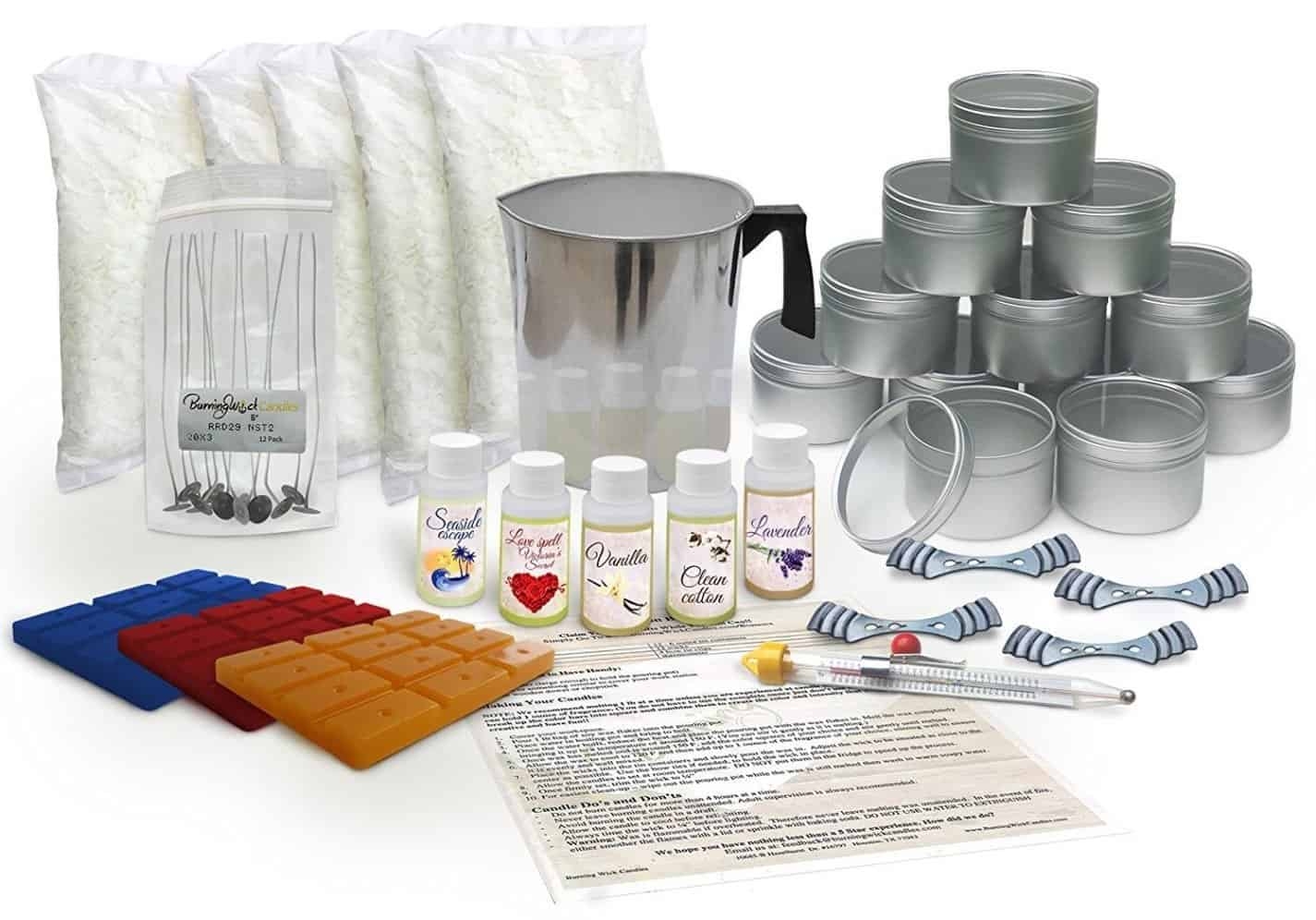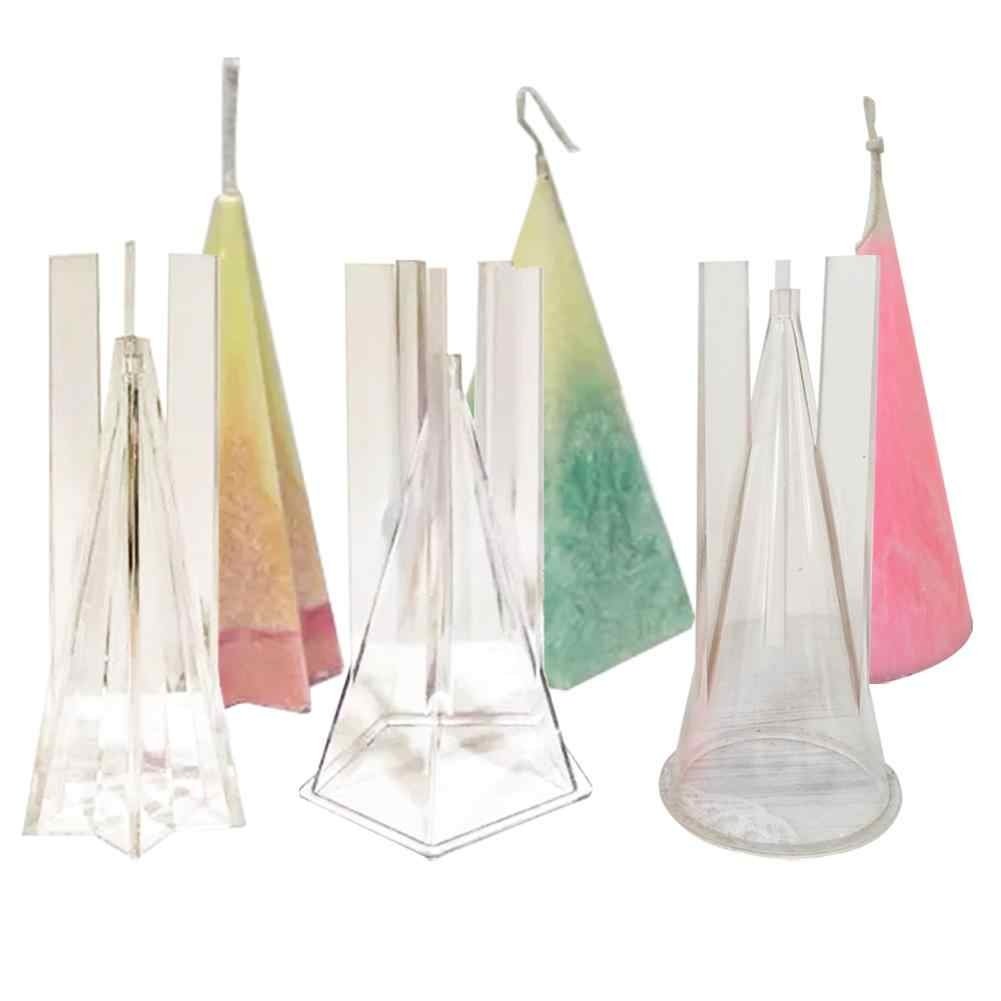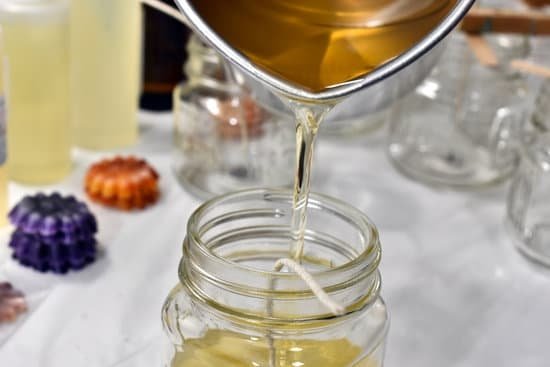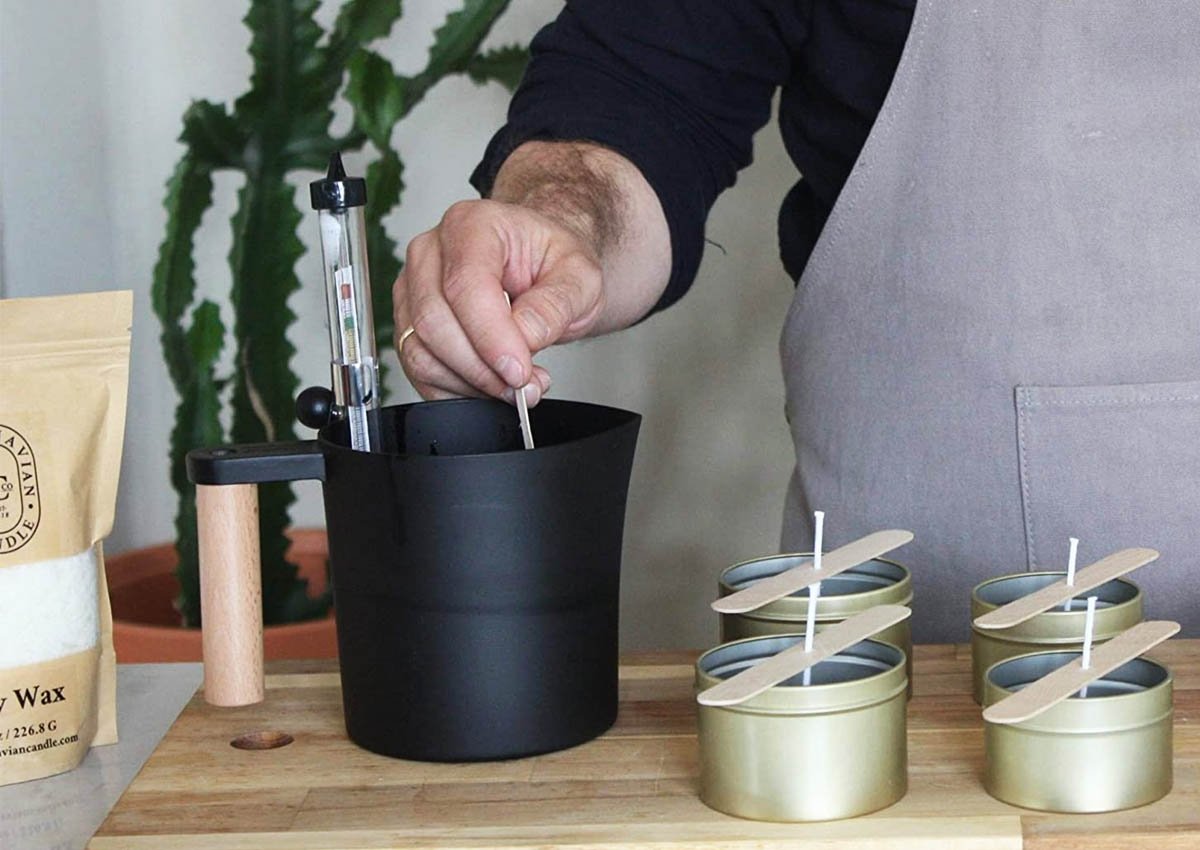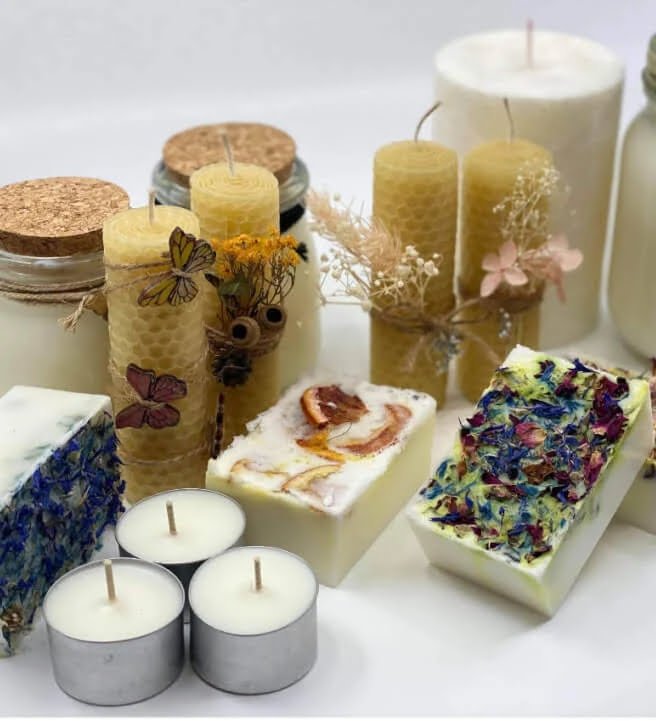Are you interested in starting your own candle making business? Whether you have a passion for crafting or you’re looking to dive into the world of entrepreneurship, selling candles can be a rewarding and profitable venture. In this article, we will cover everything you need to know about making candles to sell, from choosing the right materials and supplies to marketing and selling strategies.
Candle making for selling involves more than just melting wax and adding fragrance. It’s about understanding the different types of waxes, mastering various techniques, and creating eye-catching designs that will appeal to your target market. We’ll take an in-depth look at each step of the process and provide valuable insights that will help you succeed in the competitive world of candle selling.
From selecting the perfect materials and learning about different types of waxes to setting up your workstation and abiding by legalities and safety considerations, this article will provide a comprehensive guide for anyone looking to embark on their journey toward a successful candle making business. So, let’s delve into the exciting world of candle making for selling.
Choosing the Right Materials and Supplies for Candle Making
When it comes to making candles to sell, choosing the right materials and supplies is crucial. The first step is to decide what type of wax you want to use. There are several options available, including paraffin wax, soy wax, beeswax, and coconut wax. Each type of wax has its own unique characteristics and benefits, so it’s important to do your research and choose the one that best fits your needs.
In addition to wax, you will also need wicks, fragrance oils or essential oils, colorants, containers, and other tools such as a double boiler or melting pitcher. It’s important to invest in high-quality materials and supplies to ensure that your candles turn out well and meet safety standards. This also means considering eco-friendly options when possible as consumers are increasingly interested in sustainable products.
Finally, don’t forget about packaging. The containers and labels you choose can make a big difference in how your candles are perceived by potential customers. Consider using recyclable or reusable containers and designing eye-catching labels that reflect the quality of your handmade candles.
| Materials | Supplies |
|---|---|
| Wax (paraffin, soy, beeswax or coconut) | Wicks |
| Fragrance oils or essential oils | Colorants |
| Containers | Double boiler or melting pitcher |
| Labels |
Understanding the Different Types of Waxes for Candle Making
When it comes to making candles to sell, choosing the right wax is crucial for producing high-quality products that customers will love. There are several different types of waxes commonly used in candle making, each with its own unique properties and benefits. Understanding the differences between these waxes will help you create candles that stand out in the market.
Paraffin Wax
Paraffin wax is one of the most popular choices for candle making due to its affordability and ease of use. It has a high fragrance load capacity, meaning it can hold a large amount of scent, making it ideal for scented candles. However, paraffin wax does produce some soot when burned, which may not be suitable for those looking for a clean-burning option.
Soy Wax
Soy wax has gained popularity in recent years due to its natural and sustainable properties. It provides a clean burn with minimal soot and a longer burning time compared to paraffin wax. Additionally, soy wax has excellent scent throw, making it an excellent choice for scented candles. This makes it an attractive option for eco-conscious consumers looking for environmentally friendly products.
Beeswax
Beeswax is another natural and sustainable option for candle making. It has a naturally sweet aroma and burns cleanly with minimal soot. While more expensive than paraffin or soy wax, beeswax has a longer burn time and offers a warm, golden glow when lit. This makes it an excellent choice for premium and luxury candle products.
Understanding the different types of waxes available for candle making is essential for creating high-quality products that appeal to your target market. Whether you prioritize affordability, sustainability, or luxury, choosing the right wax will be key to the success of your candle making business.
Essential Oils and Fragrances
When it comes to making candles to sell, adding the right scent can make all the difference. Essential oils and fragrances are a key aspect of candle making that can elevate your products and attract customers. In this section, we will explore everything you need to know about incorporating scents into your candles for sale.
First, it’s important to understand the difference between essential oils and fragrance oils. Essential oils are natural, often derived from plants, and offer therapeutic properties in addition to their pleasant aroma. On the other hand, fragrance oils are synthetic and offer a wide variety of scents that may not be available in essential oil form. When choosing scents for your candles, consider the preferences of your target market and whether they prefer natural or synthetic fragrances.
Once you’ve chosen your desired scents, it’s crucial to incorporate them into your candle wax correctly. Different scents require different methods of incorporation to ensure they disperse evenly throughout the candle. Some fragrances may need to be added at specific temperatures or mixed with a binding agent to prevent separation. Understanding these nuances will help you create high-quality candles with consistent scent distribution, which is essential for customer satisfaction and repeat business in the competitive candle market.
Mastering Different Candle Making Techniques
Traditional Container Candles
One of the most popular types of candles is the container candle. These are made by pouring melted wax into a container, such as a glass jar or tin, with a wick placed in the center. To master this technique, it’s important to ensure that the wick is centered and straight before pouring the wax. You’ll also need to consider the type of wax and fragrance to use, as well as the appropriate temperature for pouring.
Pillar Candles
Pillar candles are another common option for candle makers. These are freestanding candles that are molded or shaped by hand. Mastering this technique involves preparing the mold, melting and adding color and fragrance to the wax, and carefully pouring it into the mold without air bubbles. Once cooled, removing the candle from the mold without damaging its shape is crucial.
Taper Candles
Taper candles are long, slender candles that are often used in candlesticks for decoration or illumination. The key to mastering this technique is achieving a consistent thickness throughout the candle and ensuring that they stand straight when burning. It’s essential to choose the right type of wax and wick size for taper candles, as well as understanding how to properly dip or pour them for an even finish.
By mastering these different candle making techniques, you can offer a wide variety of products in your candle selling business. Each technique requires attention to detail and practice, but once perfected, they can result in beautiful and unique candles that will appeal to a wider range of customers.
Design and Packaging
When it comes to selling candles, the design and packaging are just as important as the quality of the product itself. Creating eye-catching candles that stand out on the shelf can make all the difference in attracting customers and making sales. Here’s everything you need to know about designing and packaging your candles for sale.
First and foremost, consider your target market and what type of candles they are most likely to be drawn to. Is your audience more interested in elegant, minimalist designs, or do they prefer fun and colorful packaging? Understanding your customers’ preferences will help you create candles that appeal to them specifically.
Another important aspect of designing candles for sale is choosing the right materials for both the candle itself and its packaging. Consider using high-quality materials that not only look good but also protect the integrity of the candle. Additionally, eco-friendly packaging options have become increasingly popular among consumers who are environmentally conscious.
When it comes to actually creating eye-catching designs for your candles, don’t be afraid to get creative. Experiment with different shapes, colors, and textures to make your products visually appealing. Consider creating themed collections or limited-edition releases to keep your offerings fresh and exciting for customers.
In addition to design, consider how you will package and present your candles for sale. Whether it’s a sleek, minimalistic box or a decorative tin, the way your candles are packaged can greatly influence a customer’s purchasing decision. Make sure that your branding is consistent across all aspects of your design and packaging to create a cohesive look that represents your brand effectively.
Setting Up Your Candle Making Workstation
When it comes to setting up your candle making workstation, there are a few key things to consider in order to ensure that you can create high-quality products efficiently and safely. Here are some essential steps and tips to help you get started:
1. Organize your supplies: Keeping your materials and tools organized is crucial for creating a smooth workflow when making candles. Consider investing in storage containers, shelves, or cabinets to keep all of your supplies neatly organized and easily accessible.
2. Create a designated work area: It’s important to have a specific area in your home or workspace dedicated solely to candle making. This will help you stay organized and focused while also reducing the risk of accidents or spills in other areas.
3. Invest in quality equipment: Having the right equipment is vital for efficient and safe candle making. This includes a double boiler for melting wax, a thermometer to monitor temperatures, and various molds, containers, and tools for shaping and pouring the candles.
By following these steps, you can ensure that your candle making workstation is set up for success. Remember that having a well-organized and functional workspace will not only make the candle-making process easier but also contribute to the overall quality of your products.
4. Safety first: Always prioritize safety when setting up your workstation. Make sure that your work area is well-ventilated to prevent inhaling potentially harmful fumes from melting wax and fragrance oils. Additionally, invest in protective gear such as gloves, aprons, and goggles to minimize the risk of accidents or injuries during the candle-making process.
5. Clean-up routine: Establishing a regular clean-up routine for your workstation is essential for maintaining a safe and sanitary environment. Make it a habit to clean up spills immediately, dispose of waste properly, and regularly sanitize all surfaces and equipment.
Remember that setting up an efficient and safe candle making workstation will not only ensure the quality of your products but also contribute to the success of your candle making business.
Marketing and Selling Your Handmade Candles
Now that you have mastered the art of making candles to sell, it’s time to focus on marketing and selling your products. Here are some tips and strategies to help you successfully promote and sell your handmade candles:
1. Develop a Consistent Brand Identity: Create a strong brand identity for your candle business, including a memorable logo, unique packaging, and a cohesive product line. Your brand should reflect the quality and craftsmanship of your candles.
2. Utilize Social Media: Leverage the power of social media platforms such as Instagram, Facebook, and Pinterest to showcase your handmade candles. Share behind-the-scenes content, customer testimonials, and visually appealing photos to engage with potential customers.
3. Participate in Craft Fairs and Markets: Take advantage of local craft fairs, markets, and pop-up events to reach a wider audience. These events provide an opportunity for customers to see, smell, and touch your candles in person.
4. Collaborate with Other Small Businesses: Partner with other small businesses such as boutique shops or spas to showcase and sell your candles. Collaborations can help you tap into new customer bases and increase sales.
5. Offer Customization Options: Consider offering customization options for your candles, such as personalized labels or custom scents. This can attract customers looking for unique gifts or special event favors.
6. Provide Excellent Customer Service: Deliver outstanding customer service by promptly responding to inquiries, addressing any issues or concerns, and ensuring timely delivery of products. Positive word-of-mouth can significantly impact your candle sales.
By implementing these marketing strategies and staying true to the quality of your handmade candles, you can build a loyal customer base and achieve success in selling your products.
Remember that selling handmade candles also comes with legalities and safety considerations that need attention; make sure you are aware of regulations regarding label requirements, safety warnings, insurance needs etc. so that you can operate legally while protecting both yourself as the seller as well as the consumer.
Legalities and Safety Considerations for Selling Candles
When it comes to selling homemade candles, understanding the legalities and safety considerations is crucial. By adhering to regulations and ensuring the safety of your products, you can establish a trustworthy brand and protect yourself from liability. Here is everything you need to know about the legal and safety aspects of selling candles.
Firstly, it’s important to familiarize yourself with the laws and regulations surrounding candle making and selling in your area. This may include obtaining permits, complying with labeling requirements, and following specific guidelines for the production process. Each country or region may have its own set of rules, so be sure to do thorough research or consult with legal professionals to ensure compliance.
In addition to legal considerations, safety should be a top priority when making candles for sale. This involves using high-quality materials that are safe for both the environment and consumers. It also means following proper handling and storage procedures for candle-making supplies, as well as implementing best practices to prevent accidents during the production process. By prioritizing legality and safety in your candle-making business, you can build a reputable brand that customers can trust.
| Legalities | Safety Considerations |
|---|---|
| Familiarize yourself with local laws | Use high-quality materials |
| Obtain necessary permits | Follow proper handling procedures |
| Comply with labeling requirements | Implement best practices to prevent accidents |
Conclusion
In conclusion, starting a candle making business can be an exciting and fulfilling endeavor. From choosing the right materials and supplies to mastering different techniques, understanding waxes, adding scents, designing eye-catching candles, and setting up your workstation, you now have everything you need to know about making candles to sell.
While it may seem overwhelming at first, with dedication and passion, you can turn your hobby into a successful business. Remember that marketing and selling your handmade candles is just as important as perfecting your craft. Utilize social media platforms, local markets, and craft fairs to showcase your products and reach potential customers. Building a strong brand image through unique packaging and consistent quality will also set you apart in the market.
Lastly, do not forget about the legalities and safety considerations involved in selling candles. Ensure that you comply with all regulations regarding labeling, product testing, and liability insurance. By staying informed and following best practices in the industry, you can establish a reputable brand that customers trust. With determination and creativity, your journey to a successful candle making business can truly become a reality. Good luck.
Frequently Asked Questions
How Profitable Is Selling Homemade Candles?
Selling homemade candles can be profitable if you are able to create a unique product, market it effectively, and find the right customer base. It’s important to consider the costs of materials, production, and marketing when determining profitability.
What Do You Need to Make Candles to Sell?
To make candles to sell, you will need supplies such as wax, wicks, fragrance oils, containers or molds, a heat source for melting the wax (like a double boiler), and a thermometer. You’ll also need packaging materials and labels for branding and selling your candles.
What Is the 84 Candle Rule?
The 84 candle rule is a concept used by candle makers to ensure that their candles burn properly. It involves burning a new candle for no less than 3 hours but no more than 4 hours during each use until the entire surface melts to the edge of the container.
This helps prevent tunneling and ensures an even burn throughout the life of the candle.

Welcome to my candle making blog! In this blog, I will be sharing my tips and tricks for making candles. I will also be sharing some of my favorite recipes.

